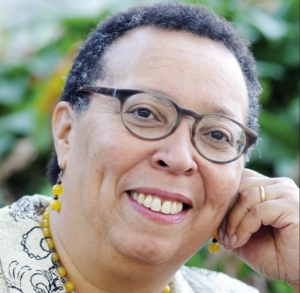
Article, written by Department of Energy and Environmental Protection, appears on Waterbury West’s Hamlet Hub. Published June 21, 2014.
This week, Connecticut Department of Energy and Environmental Protection (DEEP) Commissioner Robert Klee recognized the work of men and women who helped improve state parks while learning valuable job skills as part of the Connecticut Conservation Corps program (CCC).
At an event on Tuesday to meet the CCC workers and see some of the work that they have done at Rocky Neck State Park, East Lyme, Commissioner Klee said, “The original CCC helped transform our national and state park system, including parks in Connecticut, and provided valuable experience for the young men who participated. This tradition continues with today’s emphasis on people of all ages looking for new employment opportunities and to learn new skills. The work done by these crews does not replace work tasks by DEEP employees but rather complements them, allowing state workers to focus on other immediate needs.”
“A successful career requires knowledge in planning, establishing goals, problem-solving, communication and project management – all critical workforce skills that play an important role in the Connecticut Conservation Corps experience,” said State Labor Commissioner Sharon M. Palmer. “The knowledge gained from the CCC program is providing these men and women with invaluable training that can be successfully applied to future employment opportunities.”
The CCC program is a partnership between DEEP, the Department of Labor (DOL), two Workforce Investment Boards (the Eastern Connecticut Workforce Investment Board, and The Workplace from the Southwest CT Workforce Investment Area), as well as community partner agencies such as EASTCONN, a regional educational service center that provides services to schools, educators, students, and adults.
The crews at Rocky Neck and another crew in the western portion of the State began work in July 2013 utilizing Storm Sandy National Emergency Grant funds for municipalities and state parks provided by the US Department of Labor through a subsidized employment program. The two work crews were organized and hired by EASTCONN, which received funding through the Eastern Connecticut Workforce Investment Board (EWIB). EASTCONN was responsible for recruitment and hiring of crew leaders, hiring long-term unemployed crew members, and providing necessary training to the crews.
The work of the two crews included repairing damage to the boardwalk at Rocky Neck State Park as well as cleaning up damage at other state parks such as Bluff Point State Park, Groton and major sections of the Airline Trail State Park, Thompson. In western Connecticut, Storm Sandy damage cleanup was performed at Silver Sands State Park, Milford and Indian Well State Parks, Shelton.
Workers completing the program have been trained in OSHA Construction Certification, First Aid and CPR, knowledge of chain saw use, carpentry, as well as trail design and maintenance. This program training is geared toward providing workers with skills that can be transferred to future careers.
“What these people achieved goes far beyond improvements made to our parks and forests,” Commissioner Klee added. “The occupational and specific skills training they are gaining will provide them with the experience and knowledge to build a foundation for future employment opportunities. They are also learning the importance of teamwork and communication, and gaining decision-making and leadership skills – qualities that will follow them the rest of their lives.”
History of the CCC in Connecticut
Throughout the 1930s and early 1940s Connecticut had 22 CCC camps and approximately 200 to 250 young men lived at each site. Participants went to work in what were at that time, largely undeveloped state parks.
Workers built trails, roads, fire towers and picnic shelters and planted trees in many parks. Specific projects included building dams that created swimming areas at Chatfield Hollow State Park, Killingworth and Pachaug State Forest, Voluntown; clearing the recreation area for Squantz Pond, New Fairfield; improvements to Hammonasset Beach State Park, Madison; and the construction of the forest rangers’ homes at Shenipsit, Chatfield Hollow, Pachaug and Tunxis state parks.
CCC Across the Nation
Nationally, CCC stood for the Civilian Conservation Corps, which was established by President Franklin D. Roosevelt shortly after he took office to help lift the nation out of the Depression. Nicknamed Roosevelt’s “Tree Army,” the national CCC created work at a time when jobs were scarce and to helped complete environmental conservation projects in an era when soil erosion and deforestation had ravaged much of the nation’s landscape.
Nearly 3.5 million young men were enrolled in the national CCC from 1933 until 1942, when it was disbanded as manpower needs for World War II grew. Young men ages 17 to 21, as well as veterans of the Spanish American War and World War I, were eligible to serve. They signed up for six-month stints and lived in military-style camps run by military officers. They were paid $1 a day and required to send $25 of their pay back home to their families every month.





































































